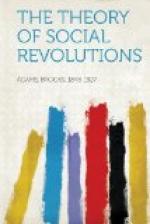I have never supposed that this argument carried complete conviction either to the legal profession, to the public, or to Congress. Certainly, it did not convince Mr. Justice Harlan, who failed to fathom it, and bluntly expressed his astonishment in a dissenting opinion in another cause from which I regret to say I can only quote a couple of paragraphs, although the whole deserves attentive perusal:—
“If I do not misapprehend the opinion just delivered, the Court insists that what was said in the opinion in the Standard Oil Case, was in accordance with our previous decisions in the Trans-Missouri and Joint Traffic Cases, ... if we resort to reason. This statement surprises me quite as much as would a statement that black was white or white was black.”
“But now the Court, in accordance with what it denominates the ’rule of reason,’ in effect inserts in the act the word ‘undue,’ which means the same as ‘unreasonable,’ and thereby makes Congress say what it did not say.... And what, since the passage of the act, it has explicitly refused to say.... In short, the Court now, by judicial legislation, in effect, amends an Act of Congress relating to a subject over which that department of the Government has exclusive cognizance."[37]
The phenomenon which amazed Mr. Justice Harlan is, I conceive, perfectly comprehensible, if we reflect a little on the conflict of forces involved, and on the path of least resistance open to an American judge seeking to find for this conflict, a resultant. The regulation or the domination of monopoly was an issue going to the foundation of society, and popular and financial energy had come into violent impact in regard to the control of prices. Popular energy found vent through Congress, while the financiers, as financiers always have and always will, took shelter behind the courts. Congress, in 1890, passed a statute to constrain monopolies, against which financiers protested as being a species of confiscation, and which the Chief Justice himself thought harsh. To this statute the Supreme Court gave a harsh construction, as the Chief Justice had more than once pointed out, when he was still an associate upon the bench. From a series of these decisions an appeal had been made to Congress, and the Senate, in the report from which I have quoted, had sustained the construction given to the statute by the majority of his brethren with whom the Chief Justice differed. Since the last of these decisions, however, the complexion of the bench had been considerably changed by new appointments, much as it had been after Hepburn v. Griswold, and an opportunity seemed to be presented to conciliate every one.




